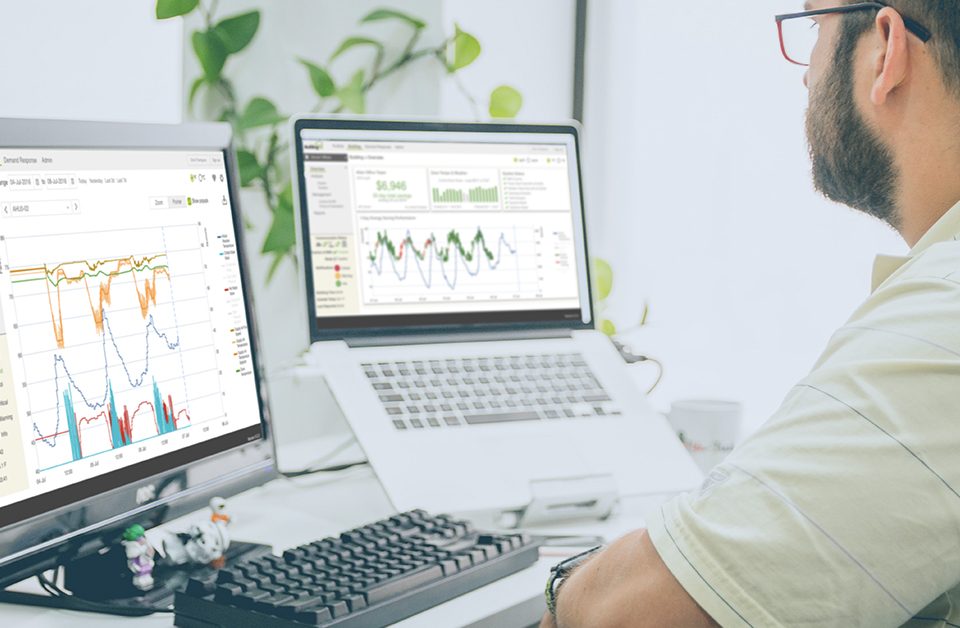
Blog

Using AI to Make the Most of Limited Data and Building Upgrade Budgets
November 27, 2018
A 2019 New Year’s Resolution for the Smart Buildings Industry
January 4, 2019Commissioning is a quality process of checks and balances for ensuring building systems are designed, constructed, and operated for peak performance. Whether that is in a new construction project or a retrofit, the end goal is the same —hand the end-client the system they paid for.
The problem is commissioning is a time- and person-intensive process that identifies the gaps between design and actual function. Due to smaller scopes, budgets, and short timelines, retrofit projects are rarely commissioned. Yet, in many ways retrofit projects are much higher risk and would benefit the most from commissioning. Retrofits must integrate with existing systems and structures containing a history of undocumented operation and interactions. Often the design process is expedited and even performed by the contractors themselves, as there is no scope for a full design and modeling process. The short time frames combined with short windows of access occupied areas make for a handover and training process that is often rushed or at best, poorly executed.
The lack of commissioning leaves important things like accountability, data validation, knowledge handover, and documentation of baseline performance on the table. All three lead to the downstream consequences of increased cost, vulnerability in negotiating and/or enforcing contracts and service level agreements, and system optimization.
Here is a short list of things that could be found when commissioning a retrofit:
- Faulty/poorly calibrated sensors
- Too high/low set points
- Improperly installed (and therefore functioning) equipment
- Poorly designed systems resulting in comfort or energy issues
- Defective equipment
- Stuck dampers
- Copy and paste sequence of operations not optimized for the building
When commissioning is performed, not only are these critical issues identified and addressed while the team is onsite, a first-time ability to run a performance measurement and verification (M&V) baseline is also gained. Such an M&V baseline provides an ability to grade, and justify,retrofit investments as well as any future enhancements.
Automation and Cloud – Cheap, Easy, Accountable
One way to make commissioning the norm for retrofits is to add cloud services. Architectures like that of BuildingIQ’s 5i Platform put an appliance on the BMS that continually reads and stores data exposed to the new system. The beauty of this is very fundamental (even outside of any fancy analytics) —the creation of a historical record. Every change, whether automated or manually performed, is now trend-able. Change a set point, the system will trend the zone temperature and the energy impact of that change. Point being, this data is archived for handover training and later analysis in addition to validating the actual commissioning.
In addition, integrating the controls with the cloud enables remote, cloud-based commissioning and analytics. By using an appliance like BuildingIQ’s which can not only monitor but also control, systems can be tested and run through their sequences remotely, even overnight, to drastically decrease the time and resources required to test. The ability to test in unoccupied hours is especially critical in retrofits, which are often in occupied spaces or impact other occupied spaces. Once these tests are implemented, it is easy to perform them again at any time if there are any system changes, without having to pay for the contractor or commissioning agent to visit the site again.
However, performing a narrowly scoped commissioning on only the systems installed as part of the retrofit often misses complex interactions and affects the newly retrofitted system has on existing building systems. This is especially critical when new systems impact the existing chilled or hot water loops and central plants. When BuildingIQ integrates with the building systems, all points, both new and existing are monitored, trended and (potentially) analyzed. Not only can the impacts of the retrofit on these existing systems be analyzed and addressed, but analytics tools can be used to address issues outside of the strict scope of the commissioning project – a huge boon to the end-client.
Future Proofing Buildings
Installing a cloud-service into a retrofit project ensures a successful path to a data-driven, efficient future operation in many ways. The building blocks and data architecture can be leveraged for post-commissioning energy efficiency or even cloud-optimization control without any extra labor or capital expense. Just as importantly, the retrofitted system is cloud-enabled by design. From an automation standpoint, a cloud service like BuildingIQ’s could not only cut on-site human costs in half during commissioning, it is also inherently ready for cloud-based optimization with closed-loop control. That means continual, monitored commissioning and predictive optimization with essentially no additional setup or hardware cost.
Using a retrofit to build a bridge to the future of building optimization is economical for the client, higher margin for the vendors, and creates a historical record of performance and accountability.

Steve Nguyen is VP of Product and Marketing at BuildingIQ. He loves products and ideas that transform markets or society. Whether they are transformative in and of themselves, or because they are enablers, he’s driven by creating the stories, teams, and strategy that make these agents successful.



